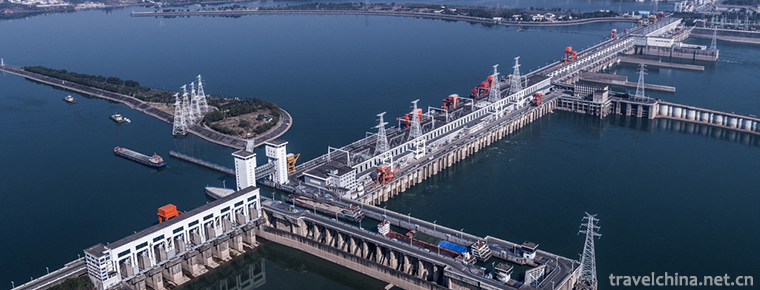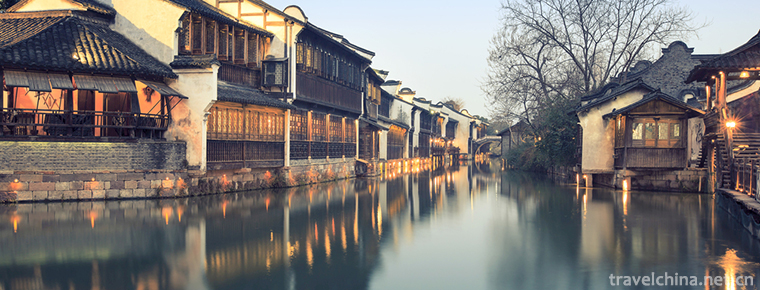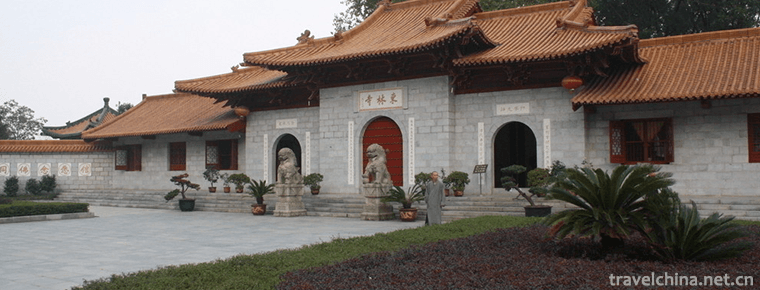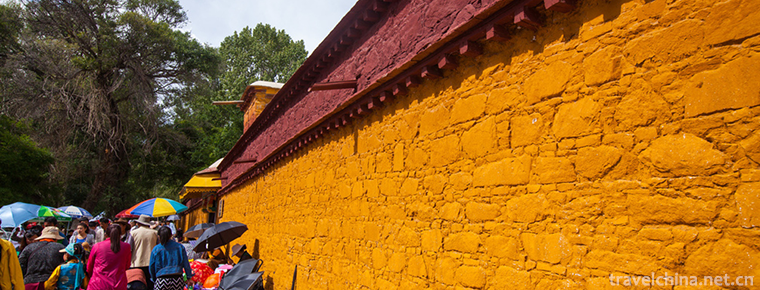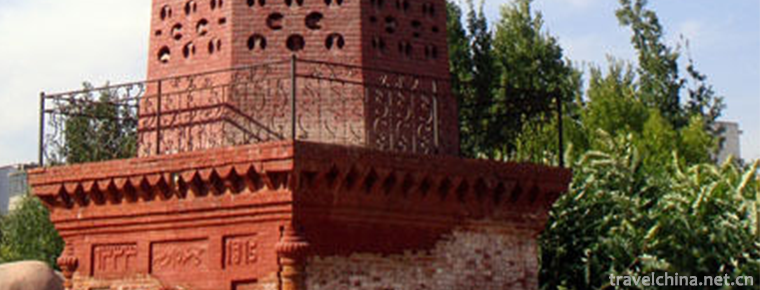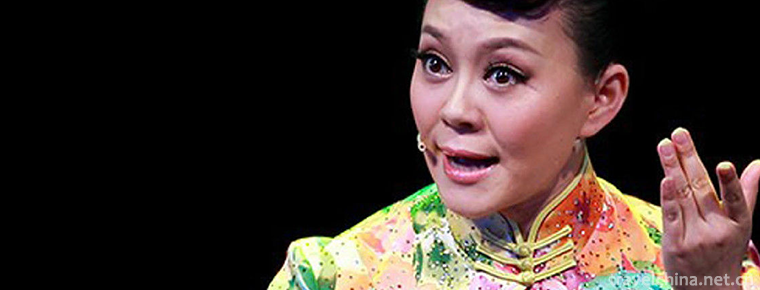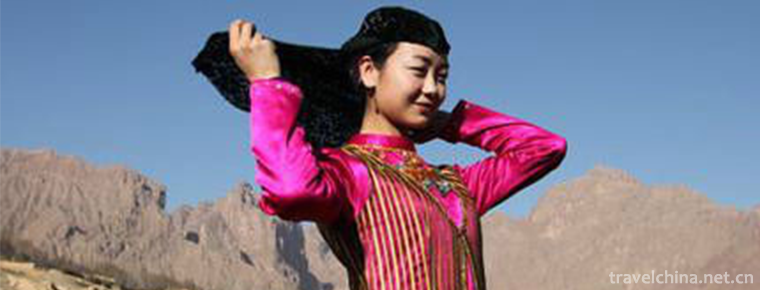Thousand Buddha Cliffside Sculptures
Thousand-Buddha Cliffside Sculptures
Qianfo cliff, located 4 kilometers north of Guangyuan City, on the East Bank of Jialing River and on the ancient Shu Road of Jinniu, has a long history and exquisite carving skills. The grottoes began in the late Northern Wei Dynasty, flourished in the Tang Dynasty and ended in the Qing Dynasty. After thousands of years, it has formed a Buddhist stone carving art treasure house with 388 meters long and 45 meters high, 950 niches and 7000 statues.
Qianfo cliff is the most magnificent grotto group in Sichuan Province, where there are many niches and nests. In 1961, it was announced by the State Council as one of the first batch of national key cultural relics protection units. It is an important part of Jianmen Shudao national scenic spot, and also the core heritage site of Guangyuan section, Jinniu Road, China's Shu Road on the preliminary list of world cultural heritage.
Qianfo cliff was established as a national 4A tourist attraction in 2012.
geographical position
Qianfo cliff is located at 45 Qianfo Road, Gongnong Town, 4 km north of Guangyuan City, Sichuan Province.
Related allusions
Qianfoya cliff statues were first excavated in the late Northern Wei Dynasty. In the first month of the fourth year of Tianjian reign of emperor Liang Wu of the Southern Dynasty and the second year of the first year of the Northern Wei Dynasty (505), Sima Dao, who was stationed in Hanzhong, moved to the Northern Wei Dynasty. The Wei Dynasty sent the minister Xing Luan as the general of Zhenxi, who was in charge of the military of the Liang and Han Dynasties This is xiyizhou.
In the following 30 years, Fu Liyan, a general of the Northern Wei Dynasty, and the Royal yuan FA Seng served as the governor of Yizhou.
While they were stationed here, they also brought the tradition of the Northern Wei Dynasty Royal family in Yungang and Longmen to dig caves and worship Buddhism. In addition, during the northern and Southern Dynasties, Jinniu Road gradually changed its route to the Jialing River. Qianfo cliff is located on the East Bank of the Jialing River, and there are large cliffs suitable for the excavation of grottoes. Therefore, the first temple of Qianfo cliff, Baitang temple, began to be built, and grotto statues gradually flourished.
Prosperous period
The Tang Dynasty was prosperous in economy, splendid in culture and art. The grottoes of Qianfo cliff are very active, as dense as a beehive. Some of the cliff walls are as many as 13 layers. Although the size of most niches of cliff statues on thousand Buddha cliff is small, they are rich in content and diverse in subject matter. There are solemn and solemn Sakyamuni Buddha, the third Buddha, Maitreya Buddha, Amitabha Buddha and Duobao Buddha. There are graceful Bodhisattvas, disciples who follow the Buddha, eight humanoid heavenly dragons in different forms, flying freely, majestic warriors and devout worshippers of Buddha The sculptors, with their skillful carving knife technique, delicate and soft line modeling, combined with their own aesthetic ideas, have carefully carved a Buddhist art work with vivid and various forms, highlighting the spirit of the times of "elegant", "robust and plump", which is amazing. After the Tang Dynasty, only a small number of niches were excavated in the Five Dynasties and the Qing Dynasty, most of which were painted with makeup.
Cultural heritage
After thousands of years of precipitation, the cliff statues of Qianfo cliff are famous for their long history, profound culture, exquisite art and rich humanities. Especially after the "an Shi rebellion", Sichuan grotto art has become prosperous, which is closely related to the important role of Qianfo cliff in connecting the north and the South and connecting the past and the future. Its scale layout, carving level, theme content and cave shape are comparable to other famous caves in China. It is a shining pearl on the ancient Shu Road in Jianmen and has high historical, cultural, artistic and scientific research values.
Main attractions
Dayun Temple
Qianfo cliff is the only ancient building in Qing Dynasty. In 1754, Guangyuan County Magistrate Zhang gengmo advocated the construction of the existing Buddha Hall. Dayun temple has a long history. It was first built in the late Northern Wei Dynasty and was originally called Baitang temple.
In the Tang Dynasty, Wu Zetian's idea of female body as emperor was opposed by the people of that time. According to the records in the Buddhist Scripture Dayun Sutra, such as Xue Huaiyi and faming, they searched for theoretical support and created public opinion for Wu Zetian to be emperor, and compiled "Da Yun Jing Shu", which called Wu Zetian reincarnated as Maitreya Buddha and should replace Li Tang to preside over the world.
Therefore, Wu Zetian ordered that Dayun temples should be built in all States of the country to collect Dayun Scriptures for Maitreya. Because Guangyuan was the birthplace of Wu Zetian, the officials and monks at that time changed the name of "Baitang Temple" in the north of the city to "Dayun Temple" and remained unchanged.
Taurus Road
Jinniudao site in Qianfoya section was excavated in 2009. There are more than 300 meters of existing site and more than 30 plank road holes. The southern end is about 50 meters long, with cliffs standing on the wall, and the terrain is dangerous. As Yan gengwang described in his "traffic map of the Tang Dynasty," the scene is as follows: "the stone cliff stands on the wall, and the driveway is made of cliff. People and horses pass through it, such as in the cabinet, covering the left side (from the north to the South), all of them are stone walls. The only way to go straight down is to find the right side, and the Jialing River rushes under it." since the Three Kingdoms, the two Jin and the southern and Northern Dynasties, "both ancient and modern follow the thousand Buddha cliff." To line ". In the third year of Kaiyuan of Tang Dynasty (715), Shi Weikang, the governor of Yizhou Dadu Prefecture, chiseled stones for the road.
The inscription on the left side of Qianfo cliff's Buddhist cave records the event, "the May 4th year of Xianfeng reign of Qing Dynasty / Jiannan Road, the 3rd year of Kaiyuan period of Tang Dynasty, the inspector general of Jiannan Road, Yinqing Guanglu, went to Yizhou University / governor of the governor's office, Wei Kang, Wannian County, Shaanxi Province, chiseled stones for the road and dried up the Buddha's virtues / Liang Jialin's supervisor, sun Yuchun, Huang Yuanqing, engraved the letter of reverence to the stone Neijiang high Lizhong".
In the early Ming Dynasty, there was a large-scale renovation of the road in front of Qianfo cliff. In the early Qing Dynasty, Gu Zuyu recorded: "in the 24th year of Hongwu reign in the Ming Dynasty, Cao Zhen, Marquis of Jingchuan, saw each other and dug, and stacked stones for the bank, which was beneficial for the smooth road.
It is also recorded in "annals of Zhaohua County · annals of Wu Bei" that in the 24th year (1391) to January 25th year (1392) of emperor Hongwu of Ming Dynasty, marquis Cao Zhen of Jingchuan sent Chengdu Guard commander Wang Qing to build the post road from Baoning house to Hanzhong. Among them, Qianfoya area "used to be a stack Pavilion, which was repaired year after year, with a lot of labor costs. According to the situation, mountains and stones were built from rivers and towns, with a width of 4.5 Zhang and a width of 4.5 Zhang There is no difficulty from Sichuan to Shaanxi. "
At that time, the road was built from the river and town, the stone was built as the bank, and the wooden plank road was replaced by the stone slab road. The existing ramparts in the southern part of Qianfo cliff are built with lime mortar, or are relics of that time. In 1935, the construction of the Sichuan Shaanxi highway began. The cliff in the south section was blown up, the road surface was widened, the roadbed was raised, and cars could pass through, and the ancient Jinniu Road was buried. After the 2008 Wenchuan earthquake, Qianfo cliff was included in the post disaster reconstruction.
In 2009, the traffic function of Jinniu Road in Qianfo cliff section was abandoned due to the diversion of Sichuan Shaanxi highway.
Lianhua Cave
It was excavated in the Wuzhou period (about 690-697). It is located at the bottom of the middle part of Qianfo cliff. A lotus flower is carved on the top of the cave, so it is called "Lotus cave". In the three walls of the cave, there is a large arched niche with one Buddha and two Bodhisattvas carved in each of the three walls, forming the three Buddha statues of Amitabha Buddha, "present life" Sakyamuni Buddha and "future life" Maitreya Buddha. In the first year of Tianxuan's reign (690 A.D.), fameng, a Buddhist monk in the Eastern Wei state, wrote four volumes of Dayun Sutra, which called Wu Zetian the descendant of Maitreya Buddha. In the contemporary Tang Dynasty, he was the Lord of Yanfu, and the system was awarded to the world. The Maitreya Buddha sitting in the middle of lotus cave should be the product of the political atmosphere at that time.
Dayun ancient cave
Dayun ancient cave (No. 512) was excavated by Shi Weikang, governor of Yizhou Dadu Prefecture by Yinqing Guanglu, the inspector general of Jiannan road. The project started in 715 and was completed in 722. Dayun ancient cave is located in the center of Qianfo cliff, which is the largest cave in Qianfo cliff. The existing grottoes are 372 cm high, 561 cm wide and 940 cm deep. On the top of the grotto, there are four characters named "Dayun ancient cave" in 1839, the 19th year of Daoguang reign of the Qing Dynasty. Two thirds of the back part of the cave room is a rectangular altar base with two layers of walls. At the back of the altar base, the left and right sides of the main Buddha were enlarged inward in the Tang Dynasty, and then the high altar was rebuilt. On each altar, an open dome shaped niche was opened. In the niche, there were 13 statues of Buddha, two disciples, two Bodhisattvas, two powerful men, two heavenly kings, two gods and two supporting Bodhisattvas. There are 136 statues of Bodhisattvas on the left and right walls of the cave. The Dali Buddha in the cave is 2.38 meters high. The remaining leaves of the bodhi tree reach to the top of the cave. The main statue is dressed in polished meat bun. His face is plump. His abdomen is slightly protruding and his lines are smooth. His left hand is raised flat and close to his abdomen. The palm is facing outward. The two fingers of the food and middle fingers give the wish seal. Dayun ancient cave is well-organized and magnificent, with creative themes and statue layout.
Wei Kang Grottoes
Wei Kang Cave (No. 513) is located in the south of Dayun ancient cave. It was excavated by Wei Kang together with Dayun ancient cave. On the right wall of the cave, there is an inscription "in June of the 10th year of Kaiyuan, the inspector general of Jiannan Road, Yinqing Guanglu, and Shi Weikang, the governor of Yizhou Dudu Prefecture. In 715, Wei Kang became the governor of Yizhou City, and returned to Beijing in the fourth year of Kaiyuan. The whole project was basically completed in June 722. In Weikang grottoes, there are one Buddha, two disciples, two Bodhisattvas, two powerful men, two heavenly kings and two divine kings. In front of the Buddha seat, there are two supporting Bodhisattvas, totaling 13 statues. This new combination of statues should be a new one brought by Wei Kang from the two capital areas, which has a great impact on the excavation of Qianfo cliff grottoes. Wei Kang is one of the most influential officials on the statue of thousand Buddha cliff.
Guanyin Grottoes with lotus
There are six statues of Sakyamuni, Duobao Buddha and two Bodhisattvas on the altar. Behind the altar, there is a large back screen with eight dragon sculptures. The theme is from the "see the pagoda" in the Lotus Sutra of Miaosha. It is said that when Sakyamuni spoke the Sutra for all living beings in the Qige mountain of wangshecheng, seven pagodas poured out from the ground in front of the Buddha's throne. They lived in the air, and there was a loud voice in the tower, praising Sakyamuni's ability to teach Bodhisattva with equality and great wisdom. The disciples did not understand the reason. Sakyamuni said that there was a Buddha in the pagoda, which was a multi treasure Buddha in the past. This Buddha made a great vow when he went on the path of Bodhisattva. If I became a Buddha, there was a saying in the ten parts of the country after I became a Buddha. The Buddha enters the pagoda with his whole body when he becomes a Taoist. Sakyamuni opened the pagoda with his magic power. When he saw the Buddha sitting on the lion's seat in the pagoda, his whole body did not disperse. At that time, Duobao Buddha was composed of half a seat and Sakyamuni Buddha in the pagoda. It said, "Sakyamuni Buddha, you can have this seat." Immediately Sakyamuni went into the tower, sat half of it, and finished sitting.
Su niche
Su'an niche is located in the middle of Qianfo cliff. It was excavated in 723 A.D. and it is a round arched niche with a height of 1.8 meters, a width of 1.64 meters and a depth of 0.85 meters. There are three statues of one Buddha and two Bodhisattvas carved in the niche. The main statue is Maitreya Buddha, with polished meat bun, painted round head, square and moderate face, slightly sunken corners of mouth, and three lines of neck, sitting on a rectangular seat with girdle waist. The left hand caresses the knee, the right hand raises, looks like to cast the fearless seal.
The two Bodhisattvas are 1.18 meters high, standing on a single-layer inverted lotus round seat, with crown and hair, square face, bare upper body, slanting over the armpit, wearing a collar, arm and bracelet. The collar is decorated with three beads hanging in front of the chest, and the skirt is hung down to the back of the foot, and the clothing patterns on the legs are in a circular arc shape, Yingluo is crossed in front of the abdomen and falls down between the legs in three ways. The silk thread goes around the abdomen and the front of the knee, and goes around the arm and hangs on the side of the body.
The left Bodhisattva holds a willow branch in his left hand and a bottle in his right hand. The Bodhisattva on the right holds a towel in his left hand and a willow twig in his right hand. The whole niche statue is exquisite with smooth lines, which can be regarded as a masterpiece of Tang Dynasty statues on Qianfo cliff.
There is an inscription on the south side of this niche: "the governor of the governor's office, Shi Zhijie, jiannandao, the governor of the state of Shangzhu, was appointed to be the Minister of Ziwei in 716. Therefore, it is also called" prime minister's niche ".
tourist guide
Qianfo cliff in Guangyuan belongs to subtropical humid monsoon climate. The climate is mild, the light is suitable, the four seasons are distinct, and the continental monsoon is obvious. The average temperature is about 15.4 ℃. The best travel season is from March to November.
Free ticket policy: children below 1.2 meters in height are free of charge; elderly people over 65 years old with old age card or ID card, active servicemen with officer's certificate and disabled person with disability certificate are free of charge
Preferential policy: 60 to 65 year old people with old age card or ID card must buy half ticket in national legal holidays, the rest of the time free.

-
Three Gorges Dam
The Three Gorges Dam is located in Sandouping Town, Yichang City, Hubei Province, China. It is 38 kilometers from the Gezhouba .
Views: 146 Time 2018-11-11 -
Wu zhen ancient town
Wuzhen, located in Tongxiang, Jiaxing City, Zhejiang Province, is located in the "Golden Triangle" of Jiangsu, Zhejiang and Shanghai.
Views: 190 Time 2018-11-11 -
Xibaipo Scenic Area Pingshan County Shijiazhuang
Xibaipo is located in the middle of Pingshan County, Shijiazhuang City, Hebei Province, with a total area of 16,440 square meters. It was the seat of the CPC Central Committee.
Views: 148 Time 2018-11-24 -
Donglin Temple
Donglin Temple, located at the foot of Lushan Mountain, Jiujiang City, Jiangxi Province, is 16 kilometers north of Jiujiang City and 50 kilometers east of Lushan Luling Street. Because it is east of X.
Views: 124 Time 2018-12-20 -
Luo Bu Lin Ka Roblinka
Roblinka is a national key cultural relic protection unit, located in the western suburbs of Lhasa, Tibet. Founded in the 1840s (Dalai VII), the Dalai Lama's summer administration place is a typical T.
Views: 186 Time 2019-02-06 -
Wulingyuan
Wulingyuan Scenic Spot is located in the northwest of Hunan Province, central China. Its longitude is 110 20'30 ~110 41'15 and latitude is 29 16'25 ~29 24'25.
Views: 150 Time 2019-02-24 -
Construction Skills of Russian Nationality Residences
Historically, Tacheng once had the reputation of "Oriental Moscow", which is by no means a historical accident. It has a close relationship with the border trade in the past 150 years.
Views: 345 Time 2019-04-28 -
Henan Pendant
Henan pendant originated in Henan Province. It is a traditional form of folk art which is formed by the combination of Taoism, Yinggeliu and Sanxianshu, which are popular in Henan and Northern Anhui. .
Views: 419 Time 2019-05-03 -
Talking about ancient times
Telling the ancients means telling books and stories. It is a traditional language performing art form in which ancient artists use Quanzhou dialect in Minnan language to re-create and deliver novels .
Views: 302 Time 2019-05-05 -
Nuuziz Festival
The word "Nuruzi" comes from the ancient Iranian language and means "spring rainy day". On March 21 of each year, like the Spring Equinox, it means the arrival of spring. Uygur, Ta.
Views: 286 Time 2019-06-08 -
Salar Costume
The traditional dresses of the Salar nationality are bright and bright in color and full of national characteristics. Salar costumes have two characteristics, namely (1) Islamic color of costumes; (2).
Views: 128 Time 2019-06-11 -
Geographical environment of Mianyang
Mianyang City is located in the northwest of Sichuan Basin, in the middle and upper reaches of Fujiang River, bordering Qingchuan county and Jiange County of Guangyuan City in the East, Shehong city and Daying County in Suining City in the south, Luojiang.
Views: 324 Time 2020-12-14
